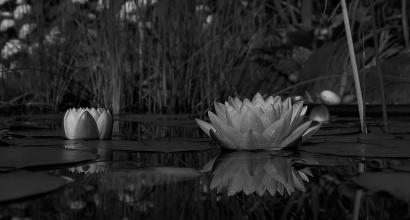A Heart for the Welfare of the Society
There is absolutely no doubt that Sharma was always loyal to the tradition. There are some typical ‘norms’ connected with the scholarly world. One such ‘norm’ is that a person who is known to be a scholar in a certain field of learning usually does not even explore the bounds of the particular subject. It is hard to find scholars who are experts of multiple domains.
Though this ‘norm’ appears to be reasonable at the outset, is actually problematic. In today’s world there has been a constant attack on all sanātanic values – the attackers are those who call themselves ‘modern’ and have absolutely no affinity for the sanātanic culture. At a time when the number of people who have got rigorous training in the śāstras is quite low, it would be tragic if even those who are well-versed become compartmentalised. If they harbour sentiments such as – ‘My area of interest is vyākaraṇa only,’ ‘I am a devout vedāntin and have no interest in any other branch of learning,’ and they limit themselves to cocoons, where then will we be able to find people who can stand for dharma? Who will provide guidance for the building of a value-based society adhering to the sanātana-dharma? Shouldn’t everyone, including the traditional scholars, consider it their duty to work towards the betterment of the society?
Sharma, who had this in mind from a tender age, always had great concern for the society and constantly thought about the welfare of the nation. He displayed tremendous interest in all activities related to the socio-political spheres. It is only because he had this approach towards his life that he had a healthy attitude towards the society. This is yet another feature that makes him stand apart from the ‘traditional’ scholars.
During the time when Sharma resided in an out-house in the vicinity of the Gokhale Institute, many programmes that were held at the Institute pertained to the areas of administration, politics, economics, judiciary, external affairs, and so on. These subjects were not related to Sharma’s areas of expertise. Yet he always sat through all these lectures. He must have sat there with the feeling that there will be something new for him to learn anyway. Moreover, since he was closely associated with the Gokhale Institute, he wanted to be a part of as many of its activities as possible – this was the dedication he had towards the Institute.
Śatāvadhāni Dr. R Ganesh once said, “Sharma traverses the literary world with a gait filled with wisdom and nobility!”[1] This description is particularly appropriate.
Love for the World
I need not elaborate this aspect but can capture it in just a phrase – Sharma intensely loved the world around him. He constantly engaged himself in scholarly activities. He regularly went through texts and taught students; he delivered public lectures and created a large body of literature. He expressed his views regarding several practical issues that occurred in connection with the tradition; he always provided answers in accordance with the śāstras but never compromised on the needs of the day. All such activities were a result of the deep affection he had for the society. This trait in him was reinforced due to his close association with DVG.
Sharma would get so deeply engrossed in some academic study or writing that if we happened to casually visit him even to enquire about his well-being, it would only result in our embarrassment (i.e., we would feel ashamed that we had potentially disrupted his tapas). But he never considered our visits as an interruption or an impediment. Instead, he expressed great joy at our visits. He always enquired about everyone we were associated with and asked about the smooth progress of all tasks taken up. He would even bring to discussion the major aspects of the particular day’s news. He discussed incidents and ideas presented in the newspapers. He always believed that it was the responsibility of a good citizen to keep track of the happenings in the nation (and the world).
Sharma always wanted to make sure that his scholarship was of some use to the world at large. He never turned down anybody’s request. He often used to receive requests such as – an invitation for his participation in a certain event, a request to deliver a lecture on a certain topic, a request to review someone’s writing and provide feedback – he always executed such tasks even amidst several other activities he would regularly be involved with. He never complained and executed these tasks with a smile on his face but never a frown. However small the task might have been, it was in his nature to execute it with utmost dedication and to do it to the best of his capacity. He never ignored a task saying that it was too small for him to do. Ranganatha Sharma was a synonym for perfection in every detail. For people like us, who saw him from close quarters for several years, his dedication to work was an ideal we all strived to emulate. Sharma, by his very nature was our ‘conscience keeper.’
~
I wish to relate an incident—though a minor one—that can throw light on some dimensions of Sharma’s nature. Rashtrotthana Parishat wanted to bring out a recording of Kannada songs to trigger devotion to the nation (deśa-bhakti-gīta). At that juncture, I felt that it would be a good idea to add a few Sanskrit ślokas that would work as Rāṣṭra-puruṣa-vandana[2] – a benediction to the puruṣa – an embodiment of the spirit of the nation (rāṣṭra-puruṣa). However, I had to find people who could compose such ślokas. Immediately, the only name that came to mind was Ranganatha Sharma. He was a close associate of Rashtrotthana Parishat from its inception. He also had the urge to be involved in such activities.
When I went to his place, I saw that he was deeply occupied in some serious academic writing and was looking through a large number of primary texts spread in front of him. He was parallelly carrying out a discussion with two other acquaintances about some aspects of the particular subject that required clarification. I was a bit unsure and embarrassed to interrupt him under such circumstances. I stood up to take leave with the words, “I needed a small favour from you. I will see you another time.” But would Sharma let me go! “If you have come here to see me, I am sure that it is for a good cause. This world of mine is always going on.[3] Tell me, what’s the matter?” I felt a little less embarrassed, thanks to his encouraging words, and said, “We urgently need to get a few ślokas composed in Sanskrit; the ślokas need to present rāṣṭra-bhakti. You have helped us in the past too under similar circumstances.”
Sharma said with a smile, “Did you have to feel hesitant to ask this much, especially that we have known each other for quite long now? What greater duty do I have than performing this task? I shall do it for sure. Please do come see me tomorrow morning!”
By the time I visited him the next morning, he had written the ślokas that we needed and had prepared a neat copy of the same.
It had become a practice, as though by reflex, to rush to Sharma whenever we had some difficulty understanding a śāstra or had doubts about certain grammatical constructs.
To be continued...
The current article is an English adaptation of the Kannada original which has appeared in the Dīptaśṛṅgagalu, authored by Nadoja Dr. S R Ramaswamy. Thanks to Sri Hari Ravikumar for his edits. Thanks to Shatavadhani Dr. R Ganesh and Shashi Kiran BN for providing translations for the verses quoted. Full form of the article is a part of 'A Tapestry of Pen Portraits' published by Prekshaa Pratishtana in December 2020.
[1] The word used in the original is ‘dhīrodāra.’
[2] A benediction to the country, which is embodied as a human – rāṣṭra-puruṣa
[3] In other words, ‘These kinds of scholarly activities are routinely present in my life.’











































